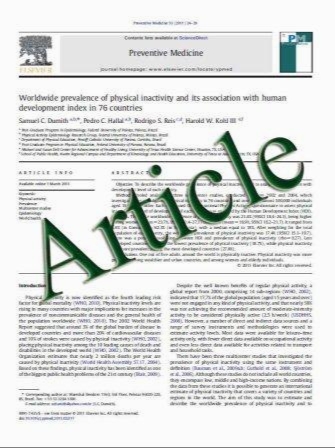Polo-like kinase 2 (SNK/PLK2) is a novel epigenetically regulated gene in acute myeloid leukemia and myelodysplastic syndromes: genetic and epigenetic interactions
- نوع فایل : کتاب
- زبان : انگلیسی
- مؤلف : Leonidas Benetatos & Aggeliki Dasoula & Eleftheria Hatzimichael & Nelofer Syed & Maria Voukelatou & George Dranitsaris & Konstantinos L. Bourantas & T
- چاپ و سال / کشور: 2011
Description
Polo-like kinase 2 (SNK/PLK2), a transcriptional target for wild-type p53 and is hypermethylated in a high percentage of multiple myeloma and B cell lymphomas patients. Given these data, we sought to study the methylation status of the specific gene in acute myeloid leukemia (AML) and myelodysplastic syndrome (MDS), and to correlate it with clinical and genetic features. Using methylation-specific PCR MSP, we analyzed the methylation profile of 45 cases of AML and 43 cases of MDS. We also studied the distribution of MTHFR A1298C and MTHFR C677T polymorphisms and FLT3 mutations in AML patients and correlated the results with hypermethylation in the SNK/PLK2 CpG island. The SNK/PLK2 CpG island was hypermethylated in 68.9% and 88.4% of AML and MDS cases, respectively. Cases with hypermethylation had a trend towards more favorable overall survival (OS). There was no association between different MTHFR genotypes and susceptibility to develop AML. SNK/PLK2 hypermethylation combined with the MTHFR AA1298 genotype was associated with a tendency for a better OS. Similarly, patients with SNK/PLK2 hypermethylation combined with the MTHFR CT677 polymorphism had a better OS (HR=0.34; p=0.017). SNK/PLK2 methylation associated with unmutated FLT3 cases had a trend for better OS compared to patients with mutated FLT3 gene. SNK/PLK2 is a novel epigenetically regulated gene in AML and MDS, and methylation occurs at high frequency in both diseases. As such, SNK/PLK2 could represent a potential pathogenetic factor, although additional studies are necessary to verify its exact role in disease pathogenesis.
Ann Hematol (2011) 90:1037–1045 DOI 10.1007/s00277-011-1193-4 Received: 10 August 2010 / Accepted: 7 February 2011 / Published online: 22 February 2011


